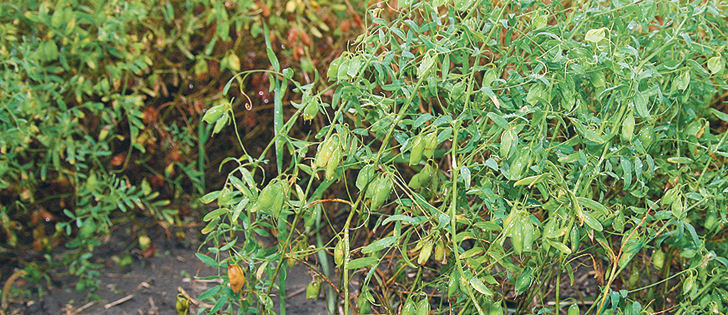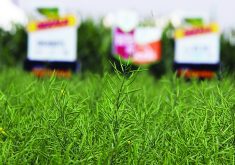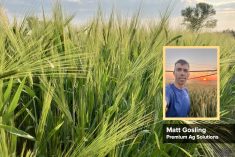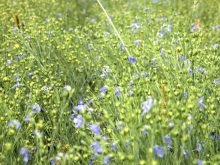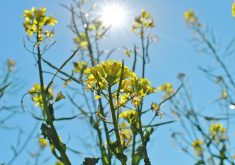Three million acres of pulse crops grown annually in Alberta is a goal well within reach, says an Alberta Agriculture pulse crop specialist.
Mark Olson believes growers are already 75 percent of the way there, based on the 2.4 million acres planted to beans, peas, lentils and fababeans in the province in 2016.
“I’m confident that we could easily be at three million or even more than that,” Olson told farmers at Agronomy Update in Lethbridge Jan. 18.
There are about 25 million acres of cropland in Alberta, including tame hay. A one-in-four-year rotation with a pulse crop would be 6.2 million acres and if even half those acres weren’t suitable for pulses, it would still mean about three million pulse acres, he said.
Read Also

Farming Smarter receives financial boost from Alberta government for potato research
Farming Smarter near Lethbridge got a boost to its research equipment, thanks to the Alberta government’s increase in funding for research associations.
Olson spoke on global pulse day, a fitting date for his talk and also the day Manitoba announced a $400 million pea processing plant to be built in Portage la Prairie. Pulse growers viewed it as a sign of confidence in the future for pulse crops.
The number of 2016 acres sown to pulse crops in Alberta depends on who is asked, said Olson.
For example, Statistics Canada put the number of dry bean acres at 45,000, crop insurance pegged it at 47,000 and contract data indicated 55,000.
However, those figures and the ones for other pulse crops show Alberta is a big producer, said Olson. It is the closest area of pulse production to Asia and generally has higher yields than those seen in Saskatchewan or Manitoba.
Alberta has 44 percent of Western Canada’s field pea acreage, 30 percent of its dry beans, 55 percent of its fababeans, 10 percent of its lentils and seven percent of its chickpeas.
Despite that, Olson said he learned on a trade mission last year that Asian markets weren’t aware of Alberta’s role in production.
“I was kind of surprised at the fact that many of the pulse buyers in India didn’t even know that Alberta produces pulses,” he said.
“They think it all comes from Saskatchewan. So definitely some education needed to go on with some of our buyers in India about how important a player in the pulse industry Alberta is.”
Location is an advantage, he added.
“We’re the closest production jurisdiction to Asia so we do have a really good advantage over our neighbours and friends in Saskatchewan because we’re just that much closer geographically.”
Olson estimated the dollar value of the provincial pulse industry at about $900 million when the economic multiplier effect is applied. Actual dollars in 2016 generated by crops alone were about $576 million.
As for new pulse crop opportunities, Olson listed mung bean, super-sized kabuli chickpea, lupin, winter field pea and winter lentil as possibilities.
National and provincial pulse research priorities
- increase pulse yields by 20 percent by 2027, with low cost of production and improved nutritional quality
- increase use of pulses in whole food by 10 percent by 2023
- increase use of pulses as an ingredient in various product categories by five to 10 percent by 2023
- find new markets such as pet and fish food
- provide all farmers with a crop option to grow pulses on any arable land in Canada




